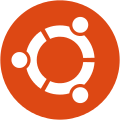Monica can run on Ubuntu 18.04 (Bionic Beaver).
Monica depends on the following:
- Apache httpd webserver
- Git
- PHP 7.2+
- Composer
- MySQL
Apache: If it doesn't come pre-installed with your server, follow the instructions here to setup Apache and config the firewall.
Git: Git should come pre-installed with your server. If it's not, install it with:
sudo apt update
sudo apt install -y gitApache: Apache should come pre-installed with your server. If it's not, install it with:
sudo apt update
sudo apt install -y apache2PHP 7.3+:
First add this PPA repository:
sudo apt-get install -y software-properties-common
sudo add-apt-repository ppa:ondrej/phpThen install php 7.3 with these extensions:
sudo apt update
sudo apt install -y php7.3 php7.3-cli php7.3-common php7.3-fpm \
php7.3-json php7.3-opcache php7.3-mysql php7.3-mbstring php7.3-zip \
php7.3-bcmath php7.3-intl php7.3-xml php7.3-curl php7.3-gd php7.3-gmpComposer: After you're done installing PHP, you'll need the Composer dependency manager.
cd /tmp
curl -s https://getcomposer.org/installer -o composer-setup.php
sudo php composer-setup.php --install-dir=/usr/local/bin/ --filename=composer
rm -f composer-setup.php(or you can follow instruction on getcomposer.org page)
Mysql: Install Mysql 5.7. Note that this only installs the package, but does not setup Mysql. This is done later in the instructions:
sudo apt update
sudo apt install -y mysql-serverThe official Monica installation uses Mysql as the database system and this is the only official system we support. While Laravel technically supports PostgreSQL and SQLite, we can't guarantee that it will work fine with Monica as we've never tested it. Feel free to read Laravel's documentation on that topic if you feel adventurous.
Once the softwares above are installed:
You may install Monica by simply cloning the repository. In order for this to work with Apache, you need to clone the repository in a specific folder:
cd /var/www
git clone https://github.com/monicahq/monica.gitYou should check out a tagged version of Monica since master branch may not always be stable. Find the latest official version on the release page:
cd /var/www/monica
git checkout tags/v2.2.1Log in with the root account to configure the database.
mysql -u root -pCreate a database called 'monica'.
CREATE DATABASE monica;Create a user called 'monica' and its password 'strongpassword'.
CREATE USER 'monica'@'localhost' IDENTIFIED BY 'strongpassword';We have to authorize the new user on the monica db so that he is allowed to change the database.
GRANT ALL ON monica.* TO 'monica'@'localhost';And finally we apply the changes and exit the database.
FLUSH PRIVILEGES;
exitcd /var/www/monica then run these steps:
cp .env.example .envto create your own version of all the environment variables needed for the project to work.- Update
.envto your specific needs- set
DB_USERNAMEandDB_PASSWORDwith the settings used behind. - configure a mailserver for registration & reminders to work correctly.
- set the
APP_ENVvariable toproduction,localis only used for the development version. Beware: settingAPP_ENVtoproductionwill force HTTPS. Skip this if you're running Monica locally.
- set
- Run
composer install --no-interaction --no-suggest --no-dev --ignore-platform-reqsto install all packages. - Run
php artisan key:generateto generate an application key. This will setAPP_KEYwith the right value automatically. - Run
php artisan setup:production -vto run the migrations, seed the database and symlink folders.- You can use
emailandpasswordparameter to setup a first account directly:php artisan setup:production [email protected] --password=yourpassword -v
- You can use
- Optional: Setup the queues with Redis, Beanstalk or Amazon SQS: see optional instruction of generic installation
- Optional: Setup the access tokens to use the API follow optional instruction of generic installation
Monica requires some background processes to continuously run. The list of things Monica does in the background is described here.
Basically those crons are needed to send reminder emails and check if a new version is available.
To do this, setup a cron that runs every minute that triggers the following command php artisan schedule:run.
Run the crontab command:
crontab -u www-data -eThen, in the crontab editor window you just opened, paste the following at the end of the document:
* * * * * php /var/www/monica/artisan schedule:run >> /dev/null 2>&1- Give proper permissions to the project directory by running:
sudo chown -R www-data:www-data /var/www/monica
sudo chmod -R 775 /var/www/monica/storage- Enable the rewrite module of the Apache webserver:
sudo a2enmod rewrite- Configure a new monica site in apache by doing:
sudo nano /etc/apache2/sites-available/monica.confThen, in the nano text editor window you just opened, copy the following - swapping the **YOUR IP ADDRESS/DOMAIN** with your server's IP address/associated domain:
<VirtualHost *:80>
ServerName **YOUR IP ADDRESS/DOMAIN**
ServerAdmin webmaster@localhost
DocumentRoot /var/www/monica/public
<Directory /var/www/monica/public>
Options Indexes FollowSymLinks
AllowOverride All
Require all granted
</Directory>
ErrorLog ${APACHE_LOG_DIR}/error.log
CustomLog ${APACHE_LOG_DIR}/access.log combined
</VirtualHost>- Apply the new
.conffile and restart Apache. You can do that by running:
sudo a2dissite 000-default.conf
sudo a2ensite monica.conf
# Enable php7.3 fpm, and restart apache
sudo a2enmod proxy_fcgi setenvif
sudo a2enconf php7.3-fpm
sudo service php7.3-fpm restart
sudo service apache2 restartThe final step is to have fun with your newly created instance, which should be up and running to http://localhost.
